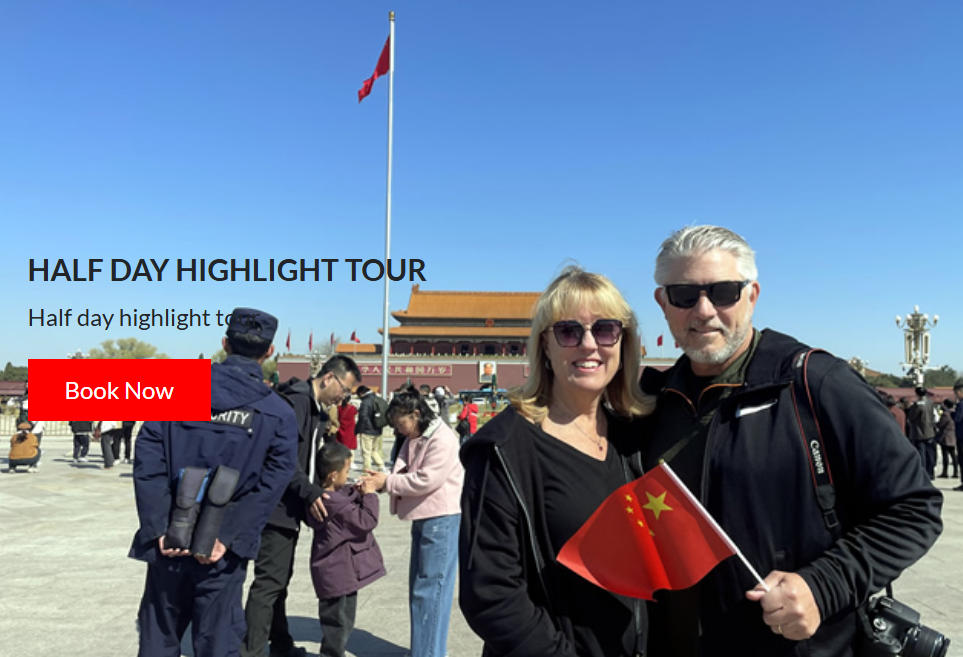II.Travel in Beijing: the Ancient Imperial Capital
With over 3000 years of history as a city and over 860 years as a capital, Beijing has many grand royal constructions, representing the highest standard of architecture in China and even in the whole world. From the grand palace, altars, and temples to the marvelous gardens, it is like unfolding a scroll painting that depicts all aspects of the imperial life, from official business to accommodation and entertainment, from religious service to sightseeing and hunting, revealing the vicissitudes of history and the majesty of the royal house.
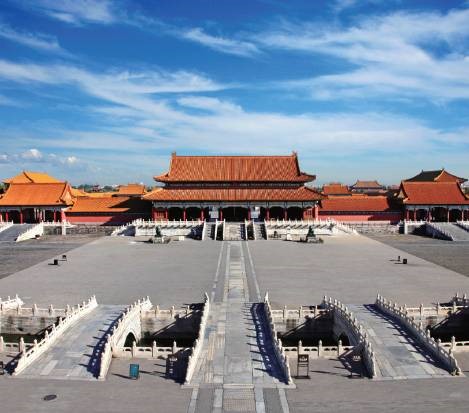
1. Palace Museum
Situated at the center of Beijing, the Palace Museum is also known as the "Forbidden City". Twenty-four emperors once lived here. As the imperial palace for Ming and Qing dynasties, it is surround by 10-meter high walls measuring 961 meters from north to south, and 753 meters from west to east. The walls plus a 52 meters wide, 3,800 meters long moat constitute a complete defense system for the palace. The Forbidden City is rated as one of the five greatest palaces in the world (the Palace Museum of Beijing, Chateau de Versailles of France, Buckingham Palace of the UK, the White House of the US and the Kremlin of Russia), and is listed as a "World Cultural Heritage" by UNESCO.
Address: No.4 Jingshan Front Street, Dongcheng District of Beijing
Main Attractions: Hall of Supreme Harmony, the Hall of Central Harmony, and the Hall of Preserving Harmony, Palace of Heavenly Purity, Hall of Mental Cultivation and Hall of Imperial Supremacy
Website: http://en.dpm.org.cn/
Tel: +86-10-85007422, 85007421
Tickets:
April 1-October 31: CNY 60
November 1-March 31: CNY 40
Treasure Gallery (admission to the Palace of Tranquil Longevity, including Opera Hall and Stone Drum Hall): CNY 10
Clock Gallery (admission to the Hall for Ancestry Worship): CNY 10
Opening hours:
April 1-October 31: 08:30-17:00
Last ticket sold at: 16:00
Last entry: 16:10
November 1-March 31: 08:30~16:30
Last ticket sold at: 15:30
Last entry: 15:40
*The Palace Museum is closed on Mondays except for statutory holidays and summer vacations (July 1-August 31).
How to get there
By subway: take Subway Line 1 to Tian'anmen East or Tiananmen West station
By bus: take bus route 1 / 2 / 5 / 52 / 59 / 82 / 89 / 99 / 120 / night 1 (夜1) / sightseeing 1 (观光1) / sightseeing 2 (观光2) to Tian'anmen East or Tian'anmen West stop.
*Please enter the museum from the south gate (the Meridian Gate). The north gate (Gate of Divine Might) and the east gate (East Glorious Gate) are for exit only.
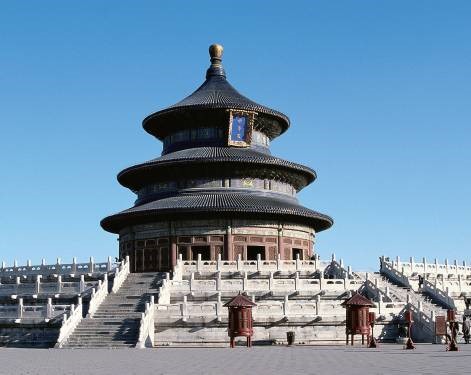
2. Temple of Heaven
The Temple of Heaven was first constructed in the 18th year of Emperor Yongle's reign (1420 AD) of Ming dynasty. Emperors in Ming and Qing dynasties offered sacrifices to heaven and prayed for harvest every year in the Temple of Heaven. Its architecture is renowned for its rigorous layout, unique structure and magnificent decoration. It covers about 2.7 million square meters, which is the largest existing altar complex in China.
Address: No.2 Tiantan East Rd, Dongcheng District of Beijing
Main Attractions: Circular Mound Altar, Imperial Vault of Heaven, Altar for Good Harvest, Seventy-two Rooms.
Website: http://en.tiantanpark.com/default.aspx
Tel: +86-10-67028866
Tickets:
Peak season (April-October): admission ticket CNY 15, combined ticket (including admission ticket, Hall of Prayer for Good Harvests, Circular Mound and echo wall) CNY 34.
Off season (November-March): admission ticket CNY 10, combined ticket (including admission ticket, Hall of Prayer for Good Harvests, Circular Mound and echo wall) CNY 28.
Combined ticket for the attractions (including Hall of Prayer for Good Harvests, Circular Mound and echo wall): CNY 20, Admission ticket for the Divine Music Administration: CNY 10.
Opening hours:
(1) Four Gates:
Opening time: peak season 6:00, off season 6:30; last ticket sold at: 20:00;
Clearing time: 21:00;Closing time: 22:00
(2) The attractions are opened at 8:00 every day:
Closing time for peak season: 17:30 (last combined ticket sold at 16:00 at the gate)
Closing time for off season: 17:00 (last combined ticket sold at 15:30 at the gate)
(3) Peak season is from April 1-October 31
(4) Off season is from November 1-March 31
How to get there
By subway: take subway line 5 to Tiantandongmen (East Gate of the Temple of Heaven) station (Exit A2), then walk 420m to the destination
By bus:
To the South gate of the temple of heaven: Route 36 / 958 / 122.
West gate: Route 2 / 20 / 120.
North gate: Route 6 / 34 / 35 / 36 / 106 / 110.
East gate: Route 6 / 34 / 35 / 36 / 39 / 43 / 60 / 116 / 128 / 525 / 623 / 684.
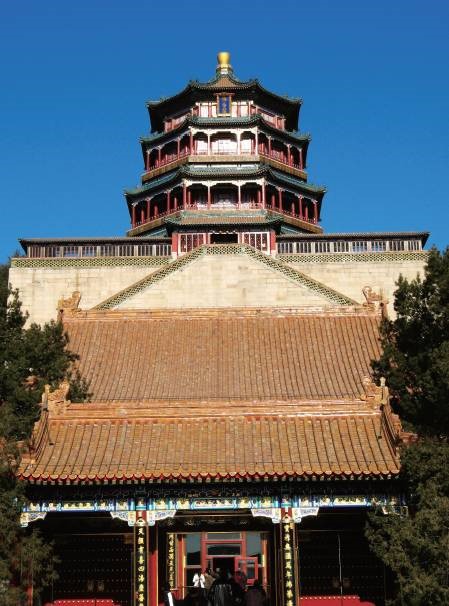
3. The Summer Palace
The Summer Palace was formerly named Garden of Clear Ripples. It is the palace and garden of emperors of Qing dynasty. Covering an area of 290 hectares, the Summer Palace is the largest and best-preserved existing royal garden in China. It is one of the four prestigious gardens in China and is reputed as the royal garden museum. The Summer Palace is a masterpiece that epitomizes Chinese garden architecture art, and enjoys a prominent status in the garden art history both at home and abroad.
Address: No.19 Xinjiangongmen road, Haidian District of Beijing
Main Attractions: Longevity Hill, Kunming Lake, Grand Opera Tower, Oriole-Listening Hall, 17-Arch Bridge
Website: http://www.summerpalace-china.com/en/
Tel: +86-10-62881144
Tickets:
Admission: CNY 30 (peak season); CNY 20 (off season)
Combined ticket for scenic spots in the Summer Palace:
CNY 60 (peak season); CNY 50 (off season)
Opening hours:
Peak season: April 1 to October 31
Opening hours of the gate: 6:30-18:00
Opening hours of the gardens: 8:30-17:00
Closed at: 20:00
Off season: November 1 to March 31
Opening hours of the gate: 7:00-17:00
Opening hours of the gardens: 9:00-16:00
Closed at: 19:00
*Tourists are not allowed to enter the garden after the ticket sale is closed. Please leave the garden on time.
How to get there
By subway: take subway line 4 to Beigongmen station (exit D)
By bus: take Bus 74 / 374 / 437 to Yiheyuan Xinjiangongmen stop
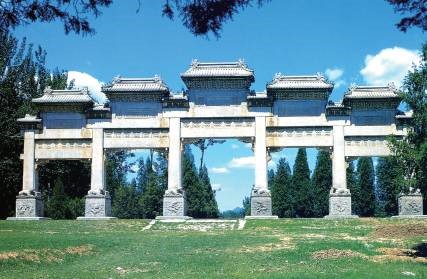
4. The Ming Tombs
The Ming Tombs are a collection of royal mausoleums of 13 emperors after the capital of Ming Dynasty was relocated to Beijing. It is the best-preserved mausoleum cluster in the world with the most emperors buried. At present, Changling Tomb, Dingling Tomb, Zhaoling Tomb and the Sacred Way are open to the public.
Address: Ming Tombs Area in Changping District of Beijing
Main Attractions: Changling Tomb, Dingling Tomb, Zhaoling Tomb (under repair) and the Sacred Way
Website: www.mingtombs.com
Booking hotline: +86-10-60761423
Tickets:
Changling Tomb: CNY 45 (peak season), CNY 30 (off season); Dingling Tomb: CNY 60 (peak season), CNY 40 (off season);
Zhaoling Tomb (under repair): CNY 30 (peak season), CNY 20 (off season);
Sacred Way: CNY 30 (peak season), CNY 20 (off season);
Combined ticket (including Changling Tomb, Dingling Tomb, Zhaoling Tomb and the Sacred Way): CNY 130 (peak season), CNY 100 (off season)
Opening hours:
Peak season (April 1 –October 31)
Dingling Tomb: 08:00~17:30 Changling Tomb: 08:00~17:30
Sacred Way: 08:00~17:30
Off season (November 1–March 31)
Dingling Tomb: 08:30~17:00 Changling Tomb: 08:30~17:00
Sacred Way: 08:30~17:00
How to get there
By subway: take the Changping subway line to the Ming Tombs station (B northeast exit)
By bus: Bus Changping xiao 22 (昌平小22) and 23 to Sacred Way, Dingling and Zhaoling; Bus 314 to Dingling and Zhaoling
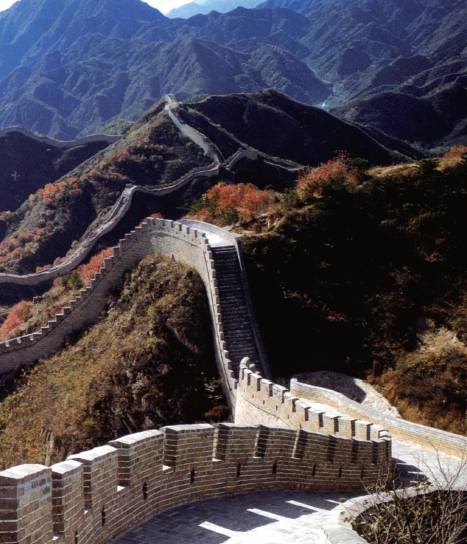
5. Badaling Great Wall
The Badaling Great Wall is located at the north mouth of the Guangou ancient path of Jundu Mountain in Yanqing District of Beijing. It is known as one of the nine fortresses in the world and is the best-preserved and most complete section of the Great Wall. It is very representative in the Great Wall of Ming dynasty. In 1987, it was listed as a "World Cultural Heritage".
Address: the north mouth of the Guangou ancient path of Jundu Mountain in Yanqing District of Beijing
Main Attractions: Beacon Towers, Looking-toward Beijing Rock, Ancient Cannons, the Great Wall Museum
Website: www.badaling.gov.cn
Tel: +86-10-69121226
Tickets: Peak season (April-October): CNY 40
Off season (November-March): CNY 35
Opening time:
April-June & September-October: 06:30~19:00
November-March: 07:30~18:00
July-August: 06:00~19:30
How to get there
By bus: take Tourist bus line 8 (游8) at Andingmen or Qianmen stop and get off at Badaling stop; or take Bus 919 from Deshengmen stop to Badaling Great Wall stop, and then take a shuttle bus to the destination.
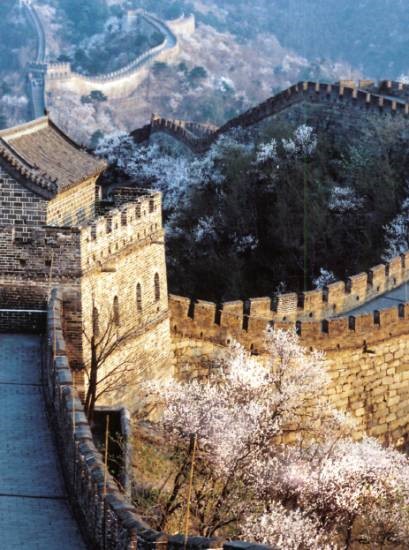
6. Mutianyu Great Wall
Mutianyu Great Wall is located in Huairou District. It connects with Juyongguan section of the Great Wall to the west and Gubeikou to the east. The 2250-meter section that is open to the public has crenels on both sides, and sits together with three watchtowers at Zhengguantai. Arrow Nock (jiankou), The Edge of Cow Horn (niujijiaobian), The Eagle Flying Belly Up (yingfeidaoyang) and other famous Great Wall attractions are all located at the west end of the Mutianyu section of the Great Wall. It is the essence of the Great Wall. Mutianyu Great Wall has lush mountains and picturesque scenery in four seasons. There is a saying that goes, "among the ten thousand miles of the Great Wall, Mutianyu is beautiful like no other".
Address: Mutianyu village in Huairou District of Beijing
Main Attractions: Great Corner Tower (Dajiaolou), outer branch wall (Waizhicheng), sea of clouds before the stone stairs (Jieqianyunhai), Zhengguantai
Website: www.mutianyugreatwall.com
Tel: 86-10-61626022
Ticket for the Great Wall: Adult CNY 40, student CNY 20
Shuttle bus: round trip CNY 15, single trip CNY 10
Cable car (adults): round trip CNY 120, single trip CNY 100
Cable car (children): round trip CNY 60, single trip CNY 50
Pulley (adults): round trip CNY 120, single trip CNY 100
Opening hours:
off season: November 16 - March 15: 8:00-17:00
Peak season: March 16 - November 15
Monday to Friday: 7:30-18:00
Weekend: 7:30-18:30
How to get there
By bus: take Bus 916 at Dongzhimen bus hub to Huairou Beidajie stop, then change to Bus H50 or H24.
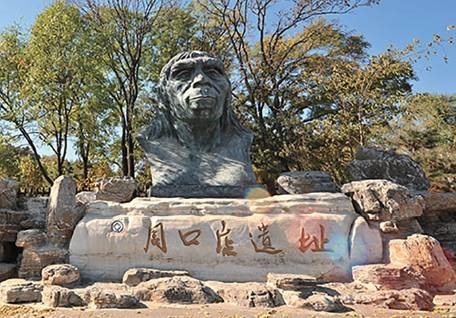
7. Zhoukoudian Peking Man Site
Zhoukoudian Peking Man Site, a world famous paleoanthropological site, is a world cultural heritage. The excavation of Peking Man skulls and the marks of using fire at the site serve as solid evidence for research on human evolution. Fangshan, the place where the site is located, were inhabited by Peking Man, Xindong Man, Upper Cave Man and Tianyuan Man, contributing to Zhoukoudian Peking Man Site's position as an excellent paleontology and paleoanthropological museum.
Address: No.1 Zhoukoudian Street, Fangshan District, Beijing
Main Attractions: Ape Man Cave, Xindong Cave, Upper Cave, Zhoukoudian Site Museum
Website: www.zkd.cn
Tel: +86-10-69301272
Admission Fee: CNY 30 to the Museum, CNY 30 to the Site Park; half-price for students
Opening Hours:
Peak Season (April to October): 9:00-16:30
Off-season (November to March): 9:00-16:00
Closed on Mondays (including national holidays)
How to get there
By bus:
Take Bus No.917 at Tianqiao Qichezhan stop and get off at Zhoukoudian Lukou, then transfer to Bus fang 38 (房38) to the Site;
Take Bus No.616 at South Square of Beijing West Railway Station and get off at Liangxiang Ximen, then transfer to Bus fang 38 (房38) to the Site.
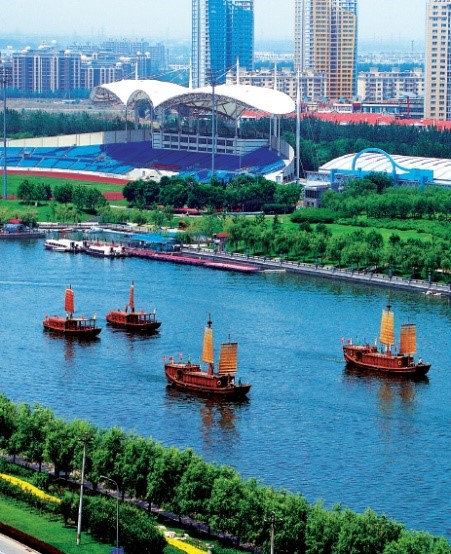
8. Tongzhou Grand Canal
At the 38th World Heritage Convention held in Doha, Qatar on June 22nd, 2014, the application to add the Grand Canal in China to the World Cultural Heritage List was approved. Beijing, as the shipping terminus sitting on the northern section of the Canal, is home to four heritage sites of the Canal. The four sites are: Wanning Bridge, Dongbuya Bridge, Tonghui Canal Section and Jiucheng Canal Section. The Great Canal is Beijing's seventh World Heritage Site.
Address: Songliang Road, Tongzhou District, Beijing
Main Attractions: Willow Riverbank, Yuqiao Bridge, Teahouse, Ancient Ferry, Flower Rain, Moon Island, Frog Singing in the Wetland, Hillside Homes
Tel: +86-10-61569200
Admission: Free
Opening Hours: All Day
How to get there
By subway: Take Line 1 to Sihui East Station, transfer to Batong Line and get off at Tuqiao Station, go out from Exit C, take Bus tong 20 (通20) to Chuangzhan Jiaju Stop, then walk to the South Gate of the Grand Canal Forest Park.
By bus: Take Bus tong 58 (通58) to Zhangxinzhuang Dongkou Stop.
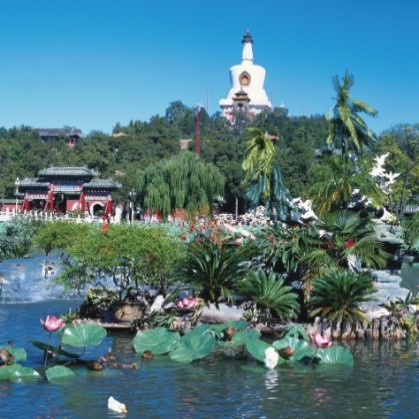
9. Beihai Park
Beihai Park, a masterpiece of Chinese garden art, is located at downtown Beijing and to the northwest of the Palace Museum. Beihai, together with Zhonghai and Nanhai, are called Sanhai (the three lakes). They are all part of ancient Chinese imperial gardens. Beihai Park covers an area of 69 hectares (including 39 hectares of water-covered area). The mains attractions include Qionghua Island, the East Bank and the North Bank. With beautifully-designed pavilions and meandering verandahs, the park has a layout featuring "one lake dotted with three isles (Taiye Pool, Penglai Isle, Fangzhang Isle, and Yingzhou Isle)", which embodies a Chinese mythology about the fairyland.
Address: No.1 Wenjin Street, Xicheng District of Beijing
Main Attractions: Kowloon Wall, Jingxinzhai Study, Yong'an Temple, Chengguang Temple, Yuegu Pavilion, Qiongdao Chunyin Monument, Round Castle
Website: www.beihaipark.com.cn
Tel: +86-10-64033225
Admission fee: Peak season (April to October): CNY 10; off season (November to March): CNY 5
Combined Ticket (including admission fee, Qiongdao Island and the Round Castle): Peak season CNY 20, off season CNY 15
Opening Hours: Peak Season (April to October): 06:30 to 21:00 (last entry at 20:30) Off-season (November to March): 06:30 to 20:00 (last entry at 19:30)
How to get there
Subway: take Line 6 to Beihai North station (Exit B)
Bus: Take Bus 13 / 42 / 107 / 111 / 118 / 612 / 701 to Beihai Beimen Stop
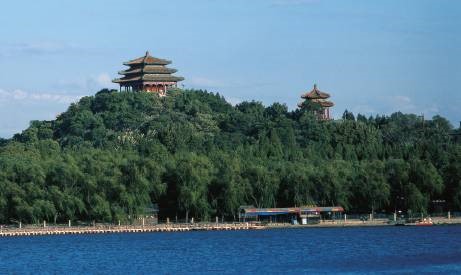
10. Jingshan Park
Located at the central point of the North-South axis of the ancient city wall of Beijing, Jingshan Park was an imperial garden during the Yuan (1271 - 1368), Ming (1368 - 1644) and Qing (1644 - 1911) dynasties. It has been open to the public since 1928 and was renovated several times after 1949. Facing south and covering an area of 230,000 square meters, the Park is featured by red walls and yellow tiles. Main attractions include: Park Gate, Qiwang Pavilion, Peak Pavilion, Shouhuang Hall Building Cluster, Xingqing Pavilion, Yongsi Hall, Jixiang Pavilion and Guande Hall.
Address: No.44 Jingshan West Street, Xicheng District, Beijing
Website: www.bjjspark.com
Main Attractions: Qiwang Pavilion, Zhoushang Pavilion and Shouhuang Hall Archway
Tel: +86-10-64038098
Admission Fee: CNY 2 for ordinary days; CNY 10 during special events
Opening Hours: November to March 06:30 to 20:00 (ticket sales end at 19:30); April to October 06:30 to 21:00 (ticket sales end at 20:30)
How to get there
Bus: Take Bus 58 / 111 / 124 / Night Bus No.2 (夜2) / Sightseeing Bus No.3 (观光3) to Jingshan Dongmen Bus Stop.
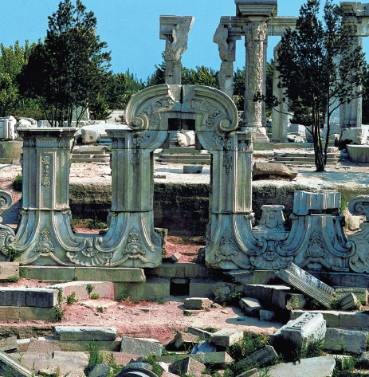
11. Yuanmingyuan Park (the Old Summer Palace)
Yuanmingyuan Park, located at the east-central part of Haidian District, is 10 kilometers to the northwest of Xizhimen. The southeast of the park is adjacent to the west gate of Tsinghua University. Yuanmingyuan was built as an imperial garden and maintained under the supervision of emperors of the Qing Dynasty, whose reign collectively lasted around 150 years. Built in 1707 (the 46th year during the reign of Emperor Kangxi) near the Summer Palace, Yuanmingyuan is composed of three gardens: Yuanmingyuan (the Garden of Perfection and Brightness), Changchunyuan (the Garden of Eternal Spring) and Qichunyuan (the Garden of Blossoming Spring). Covering an area of 350 hectares, the Park is extolled as the "Garden of Gardens". In 1856, the Old Summer Palace was burned down by British and French invaders. Yuanmingyuan park, completed in 1988, serves as an important patriotism education base, where the ruins of waters, gardens, buildings, rockworks, and sculptures still exist. A history gallery of Yuanmingyuan is built in the Relic Area of the Western-style Buildings for reflection and remembrance.
Address: No.28 Qinghua West Road, Haidian District, Beijing
Main Attractions: Grand Gate, The Hall of Justice and Honor, Relic Area of the Western-style Buildings, the Grand Waterworks (dashuifa) and Lion Grove Garden.
Website: www.yuanmingyuanpark.com
Tel: +86-10-62543673
Tickets:
Admission fee: adults CNY 10 / person; students CNY 5 / person
Monthly Admission Ticket: CNY 15 / person
Relic Area of the Western-style Buildings (including Dashuifa, the Exhibition Hall and the Labyrinth): adults CNY 15 / person; students CNY 5 / person
The Exhibition of Yuanmingyuan Panoramic Model during its Flourishing Period: adults CNY 10 / person; students CNY 5 / person
*The monthly admission ticket only covers the admission fee. Yearly admission ticket for Beijing parks doesn't apply here.
Opening Hours:
January, February, March, November, December: ticket sales from 7:00 to 17:30 and the park is open from 7:00 to 21:30.
April, September, October: ticket sales from 7:00 to 18:30 and the park is open from 7:00 to 20:30.
May to August: Ticket sales from 7:00 to 19:00 and the park is open from 7:00 to 21:00.
How to get there
Subway: take Subway Line 4 to Yuanmingyuan Station (Exit B)
Bus: take Bus No.331 / 432 / 498 to Yuanmingyuan Nanmen stop.
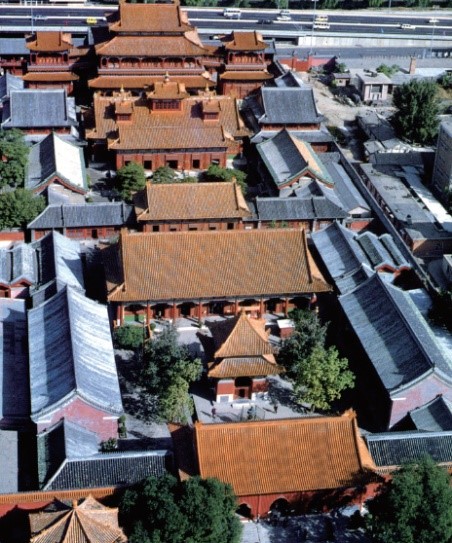
12. Yonghegong Lama Temple
Yonghegong Lama Temple lies at the northeastern corner of Beijing. Originally the residence of Emperor Yongzheng and the birthplace of Emperor Qianlong, the Temple was seen as a blessed land. In 1744 (the ninth year of the reign of Qianlong), it was changed into a lamasery under the management of a Special Affairs Minister. Among all the Buddhist temples in China, Yonghegong Lama Temple is of the highest level.
Address: No.12 Yonghegong Dajie, Beixinqiao Bridge, Dongcheng District
Main Attractions: Devaraja Hall (Hall of the Heavenly Kings), Yonghe Hall, Yongyou Hall, Falun Hall and Wanfu Pavilion
Tel: +86-10-64044499
Admission Fee: CNY 25
Opening Hours: April 1 to October 31: 09:00 to 16:30; November 1 to March 31: 09:00 to 16:00.
How to get there
Subway: take Line 5 or Line 2 to Yonghegong Station and go out from Exit F
Bus: take Bus No.13 / 116 / 117 / Night Bus No.6 to Yonghegong Bus Stop

